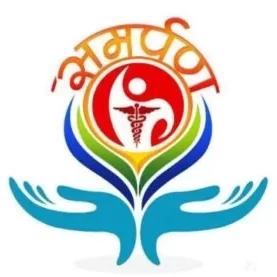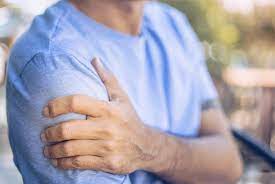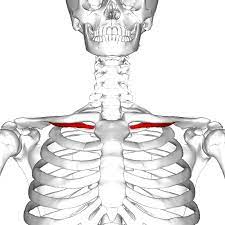Utkatasana (Chair Pose)
Table of Contents
What is Utkatasana (Chair Pose)?
Utkatasana, or Chair Pose, is a powerful standing yoga pose that strengthens the legs, core, and back while improving balance and endurance. It builds heat in the body, enhances posture, and energizes the mind.
Chair Pose is a deep-standing yoga squat that strengthens the connection between your brain and pelvic muscles. This pose will assist new yogis in stretching their spine and strengthening their arms and shoulders.
In Bikram Yoga, Utkatasana is frequently called Fierce Pose due to its powerful, wild nature. In Sanskrit, Utkat signifies “wild” and “frightening,” whereas Asana means “posture” or “position.”
While Shree Tirumalai Krishnamacharya, a professor of yoga and ayurveda, is credited with creating the modern Utkatasana, an earlier version of the Chair posture was initially documented in the Sritattvanidhi book from the 19th century.
The chair pose focuses on the breath and mind; the position asks for physical strength and endurance. When you are concentrated and in the pose, you will feel like you are pulling from a significant repository of energy. Utkatasana provides a valuable yoga principle and an amazing lesson: Consistent, long-term exercise is better than a brief, difficult course. In yoga, utkatasana and stability produce significant and long-term results.
Which muscles are used in Utkatasana?
- Quadriceps
- Hamstrings
- Glutes
- Calves
- Transverse abdominis
- Erector spinae
- Pectoralis major
- Latissimus dorsi
- Deltoids
- Triceps
What Health Advantages Does Utkatasana Offer?
- improves core balance and stability.
- strengthens the knee and ankle joints.
- improves mindfulness and concentration.
- enhances mental alertness and mindfulness.
- strengthens the glutes, legs, back, and arms.
- Core involvement stimulates the function of the abdominal organs.
- opens the chest and diaphragm, which facilitates better breathing.
- burns more fat in the stomach, arms, legs, and glutes.
- encourages the chakras of the throat, sacrum, and root.
- stimulates the spinal column and improves the way the neurological system works.
Which poses are used to prepare for Utkatasana?
- Tadasana (Mountain Position)
- Urdhva Hastasana (Upward Salute)
- Ardha Uttanasana (Standing Half Forward Bend)
- Vajrasana / Thunderbolt Position
- Garudasana / Eagle Position
- Ashwa Sanchalanasana / Low Lunge Position
- Bhujangasana / Cobra Position
How is Utkatasana performed?
- Place your feet slightly apart and stand upright.
- Maintain a straight elbow position.
- Bend your knees and gently press your pelvis down to sit on the chair of your dreams.
- At the very least, try to be relaxed! To better understand the Chair Pose, think of sitting while using a laptop or reading a newspaper.
- Make sure your hands are parallel to the ground.
- Raise your back specifically while sitting upright. Relax.
- As you read the newspaper and take the local, national, and international news, keep breathing.
- Make sure your knees don’t contact your toes as you slowly lower yourself onto the chair.
- Continue descending slowly until you are sitting in the cross-legged stance or Sukhasana. If you like, you can relax by lying on your back.
Utkatasana Video:
What are Utkatasana follow-up poses?
- Uttanasana (Standing Forward Bend)
- Setu Bandha Sarvangasana (Bridge Position)
- Bhujangasana (Cobra Position)
- Adho Mukha Svanasana (Downward-Facing Dog position)
- Uttanasana / Forward Fold Position
- Balasana / Child’s Position
- Tadasana / Mountain Position
What are the Utkatasana beginner’s tips?
- Imagine squeezing your legs together as if they were one to strengthen them. Perform the procedure with a rolled-up towel or block. Imagine trying to squeeze it and release it behind you as you rotate your thighs inward.
- However, you can also stretch your feet further apart if needed to make your base a little more stable.
- Put firm pressure on your feet to increase the lift in your upper body. Equally distribute your weight between your feet’s balls and heels.
- Start by practicing the movement in your legs, supporting yourself with your hands on your hips or the back of a (stable) chair.
What Kinds of Utkatasana Are There?
Among the variations of Utkatasana, the Chair Position (Utkatasana) is the fundamental pose.
Given that every individual is unique, a given yoga pose may be easy for one but difficult for another. As a yoga instructor, you may create position variants in these situations to challenge a student who is having trouble identifying a certain pose or present a simple version of a position to a student who is having difficulties identifying the main position.
Therefore, positional adjustments can help your students progress and become more dependent on their yoga exercises, regardless of their initial skill levels. At this point, your role as a yoga instructor becomes important.
Make sure your knees don’t cross the line of your toes twice by attaching them. If your shoulders or neck are irritated, conduct your arms far apart and/or lower. They can be aimed down toward the ground or straight in front of you. Otherwise, you might fold the elbows and point the fingertips upward. Pulling your lower abdomen back against your spine will help stabilize your lower back. Do not overarch the lumbar area.
The following versions are numerous:
- Chair Position.
- Rotated Chair Position.
- Half Chair Position.
- Chair Position Airplane Arms.
- Chair Position Arms Forward.
- Revolved Chair Position Variation.
- Revolved Chair Position Easy Stretch.
- Chair Position On Tiptoes.
- Chair Position Downward Facing Dog Position Flow.
- Standing Cat-Cow Position.
- Bear Position.
What Kinds of Utkatasana Are There?
- If your shoulders are rigid and not very flexible, it is advisable to stretch your arms in front of you in proportion to your chest rather than raising them over your chest line.
- If stabilizing in this position is an indication of resistance, it might be different to use the wall beyond to support the hips.
- If the chest and shoulders are not yet ready, begin with the arms, palms down on the thighs. Gradually work your way up to the upper grip from the frontal thighs to the arms.
- If doing the knees together is difficult for the thighs, starting with the feet apart should be a good idea.
- When performing Utkatasana, pregnant women should maintain their feet and hips apart for better stability and grip.
If you’ve never done Utkatasana before:
If you are not used to this position or if you have trouble keeping your legs tight together, begin the exercise with your feet hip-distance apart. You can also place a yoga block between your thighs to strengthen your inner thighs and keep your knees pointed forward.
You can still benefit from many of the position’s benefits by doing the exercise while seated in a yoga chair. By working with your butt off the chair and float for a short while, you can progressively extend the amount of time you can hold yourself off the chair.
In case of a neck injury:
Don’t look up; instead, focus on the front. To build strength, extend your neck on all sides while doing Chair Position exercises.
If your shoulders are powerful or tight:
Keep your hands shoulder-distance apart, just like in Urdhva Hastasana. You can spread your arms as widely apart as you need to to support your shoulders. Furthermore, you should generally look slightly ahead rather than up.
If your blood pressure is elevated:
In the Anjali Mudra (Prayer Position), place your hands on your hips or bring them to the front of your heart rather than lifting them upward.
If you’re having difficulties putting your heels down:
Your inability to bring your heels down to the mat in this position is usually due to tight calves or Achilles’ tendons. You can place a bent yoga blanket or yoga block behind your heels to have something to press them into. This will help you stretch your leg muscles and enhance your balance.
If you have lower back pain:
Your lower back may become fatigued from the position. Concentrate on placing your tailbone under you slightly, toning the abdomen (Uddiyana Bandha), and enticing your gluteal muscles.
What are the contraindications and safety measures for doing Utkatasana?
Yoga is for everyone, but remember that not everyone is a good fit for every pose. If you need more support for your body, see the Modifications section for instructions on how to practice this pose safely. The following list includes contraindications for the chair position (Utkatasana).
Injury and Surgery:
It will be difficult to exercise in this position if you have an injury or persistent knee pain. Consequently, it is advised to take on it once the knees are sufficiently strong or entirely recovered. Students with injuries to their shoulders, ankles, or hips should avoid these joints because they are all used in this pose.
Lack of Body-Breath Connections:
Individuals who require body-breath relations may hold their breath to keep the pose. These children might sway their knees when delivering or discarding the position, in addition to not satisfying the breathing pattern requirements. Yoga instructors ought to provide them this in front exercise.
Physical Strength and Weak Body :
Keep your arms down or in the Anjali Mudra (Prayer Position) if you have high blood pressure. Those who have migraines or vertigo should avoid this position. The neck fold may cause instability and vertigo when the arms are raised. The carotid arteries and jugular vein, two blood vessels on either side of the neck that supply blood to the brain, are slightly compressed during this procedure.
The jugular vein is connected to the main arteries located here. The jugular vein is one of several veins in the neck that transfer deoxygenated blood to the heart from the face, brain, and neck.
Their brain and blood arteries are strained as a result. In order to prevent joint dislocation during delivery, people with weak ankles, knees, or hips should also avoid this posture.
Chair Position On Chair Hands On Knees (Utkatasana On Chair Hands On Knees) and Chair Position Variation At Wall (Utkatasana Variation At Wall) are both great alternatives for older people and people with weaker bodies. Although severe arthritis or acute spondylitis would produce more joint pain, it is better to do the posture gradually under observation or after completing simpler positions to minimize injury.
Others:
Third-trimester pregnant women should avoid this position because it puts a lot of strain on the hips and legs to maintain the weight of the womb. Adults are not the best fit for this occupation because they lack knee and core strength. This position should be avoided by postpartum women who are still building their hip and pelvic joints.
Therapy and Restorative:
Yoga instructors must evaluate their students’ physical fitness and rule out significant spinal disorders, knee replacements, or severe back discomfort before starting any activity, even though this position strengthens the knees and body. Yoga instructors should require participants to perform Standing Shoulder Rolls, Fold Elbows, and Rotation of the Knees when Seated and Standing (Tadasana Goolf Chakra) to free up the joints and prevent injuries during the front exercise of Chair Position (Utkatasana).
FAQs
What are the advantages of Utkatasana?
Chair posture, also called utkatasana, is a difficult yoga pose that challenges your strength, balance, and concentration while using your entire body. Although it has a simple appearance, this pose benefits practitioners of all ability levels and works for multiple muscle groups.
What disadvantages does Utkatasana have?
Physical Strength and Weak Body: Students who have vertigo, headaches, or high blood pressure should avoid this pose. Arms raised in a neck bend could cause dizziness and tremors. This action causes slight pressure in the jugular vein and carotid artery.
What other name does Utkatasana go by?
Utkatasana (IAST: Utkaṭāsana) is a standing pose used for fitness in modern yoga. It is also referred to as chair position or perturbed position.
What is the duration of a chair pose?
Exhale while keeping your thighs and knees parallel by bending your knees. Lean your torso forward so that the tops of your thighs form a straight angle. Verify that your arms and body are in line with your head and neck. For 30 to 60 seconds, hold.
How many calories does Utkatasana burn?
Utkatasana develops the lower body, particularly the quadriceps, glutes, and calves, and uses the core for stability. Because it just takes a minute to hold and burns roughly five to ten calories, this pose is a great way to burn calories.
References
- EkhartYoga. (2020a, November 6). Chair Pose / Powerful Pose – Ekhart Yoga. Ekhart Yoga. https://www.ekhartyoga.com/resources/yoga-poses/chair-pose-powerful-pose
- Utkatasana (Chair Pose). (n.d.). MyYogaTeacher. https://myyogateacher.com/yoga-asana/utkatasana
- Sorathiya, D. (2024e, October 21). Utkatasana Yoga pose: Health Benefits, How to do? – Variations. Mobile Physiotherapy Clinic. https://mobilephysiotherapyclinic.in/utkatasana-yoga-pose/
- Rakshak, & Rakshak. (2024b, June 18). Utkatasana (Chair Pose) | How to do | Benefits – The Art Of Living. The Art of Living – Making Life A Celebration. https://www.artofliving.org/in-en/yoga/yoga-poses/utkatasana-chair-pose







One Comment